Iran Astronomy Tourism: Best Stargazing Destinations and Tips
Iran astrotourism offers breathtaking stargazing experiences in its dark sky reserves, where the clear, unpolluted skies reveal a mesmerizing view of the cosmos.
Iran’s connection to the stars dates back thousands of years. Ancient Persian astronomers, poets, and philosophers studied the cosmos with deep curiosity and reverence, creating a legacy that continues to shape Iran’s cultural and scientific landscape today. This enduring fascination with the night sky, reflected in Iran’s rich history of astronomical research and literature, has laid the foundation for a unique tourism experience: astrotourism.
Astrotourism is a growing niche in the travel industry where enthusiasts explore destinations with clear, unpolluted night skies to observe stars, planets, and other celestial phenomena. Iran’s pristine deserts, high mountains, and historic observatories offer unmatched conditions for stargazing and astronomical observation. This combination has propelled Iran into the global spotlight as an emerging destination for astronomy tourism, attracting travelers who seek both celestial wonders and a deeper cultural experience.
What sets Iran apart as an astrotourism destination is its blend of scenic landscapes, ancient scientific achievements, and modern astronomy facilities. Travelers can experience the quiet stillness of the desert under star-filled skies, visit observatories that offer guided viewing nights, or even attend events celebrating the country’s long-standing tradition of sky observation.
Iran astronomy tourism offers an extraordinary connection to both the cosmos and a time-honored appreciation of the universe. Visit our Tailor-Made Tours page to create a personalized journey and experience these magical landscapes under the stars.
Quick Facts
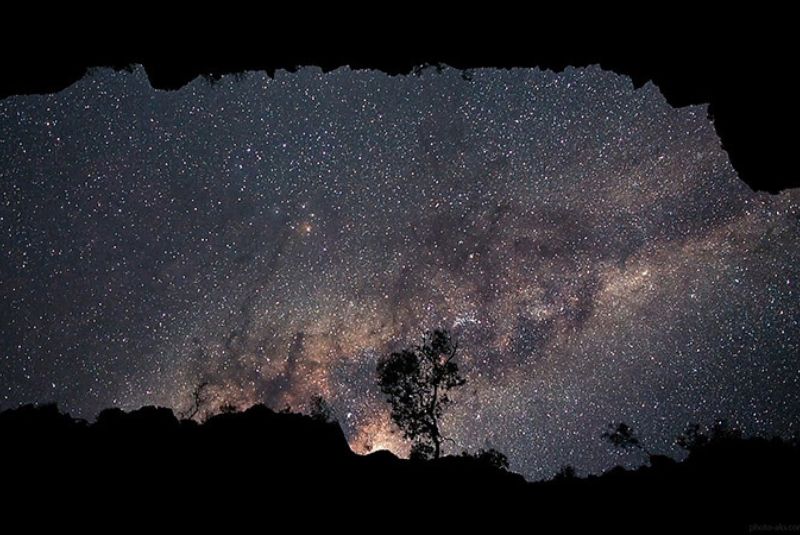
Iran’s geography plays a significant role in its appeal to astronomy enthusiasts.
- Dark Sky Reserves: Regions like the Mesr Desert and Maranjab Desert are far from city lights, offering excellent conditions for seeing the stars without interference from light pollution.
- High Altitude Regions: Mountainous areas such as the Zagros and Alborz mountains provide ideal altitudes for clearer atmospheric views.
- Expansive Desert Landscapes: Iran’s vast deserts, such as Dasht-e Kavir and Lut Desert, feature clear skies and open horizons perfect for uninterrupted sky watching.
Why Choose Iran for Astrotourism?
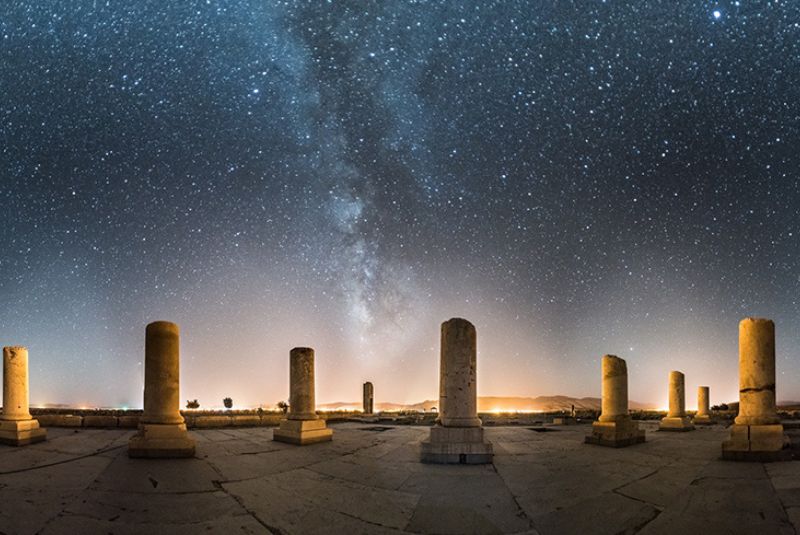
Iran has a remarkable history in the field of astronomy that spans millennia. Persian scholars and astronomers like Omar Khayyam and Al-Biruni made significant contributions to early scientific knowledge, developing calendars, calculating celestial movements, and advancing theories that influenced the global scientific community. For example, the Jalali calendar, created under the direction of Khayyam, remains one of the most accurate solar calendars. Ancient observatories and devices, such as astrolabes and celestial globes crafted in Persia, reveal an early and sophisticated approach to studying the universe. For visitors, these achievements highlight Iran’s contributions to astronomy and invite a new understanding of this rich cultural legacy.
Ideal Geography and Climate
Iran’s diverse topography offers ideal conditions for stargazing and night-sky photography. The deserts, particularly in central Iran, provide expansive, arid spaces with minimal humidity and cloud cover, creating consistently clear skies. High-altitude regions such as those around Alamut Valley and the Zagros Mountains reduce atmospheric distortion, allowing for sharper views of stars and planets. In areas like the Mesr Desert, located far from urban centers, the lack of light pollution makes the night sky appear especially vivid. These factors, combined with Iran’s moderate seasonal climate, make stargazing enjoyable and accessible almost year-round.
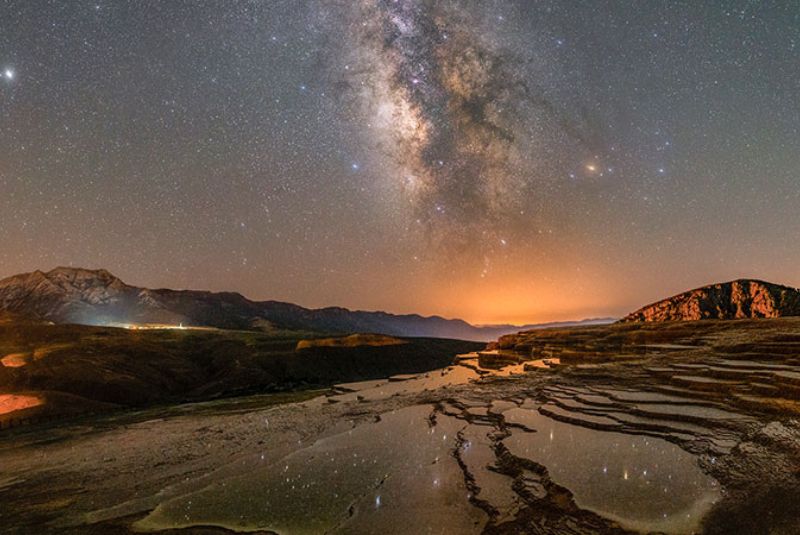
Modern Astrotourism Appeal
Astrotourism is gaining popularity worldwide as people seek immersive, natural experiences that foster a sense of wonder about the universe. Iran’s distinctive combination of clear skies, dark reserves, and historical significance aligns well with this trend, making it an appealing choice for astronomy-focused travel.

Additionally, the Iranian tourism sector has responded to this demand by offering specialized astronomy tours, observatory visits, and even guided desert excursions timed with celestial events like meteor showers. Iran’s unique blend of history and modern accessibility makes it an increasingly compelling destination for astrotourism, where travelers can witness both the ancient and modern worlds united under a common sky.
Top Destinations for Astrotourism in Iran
Alamut Valley (Qazvin Province)
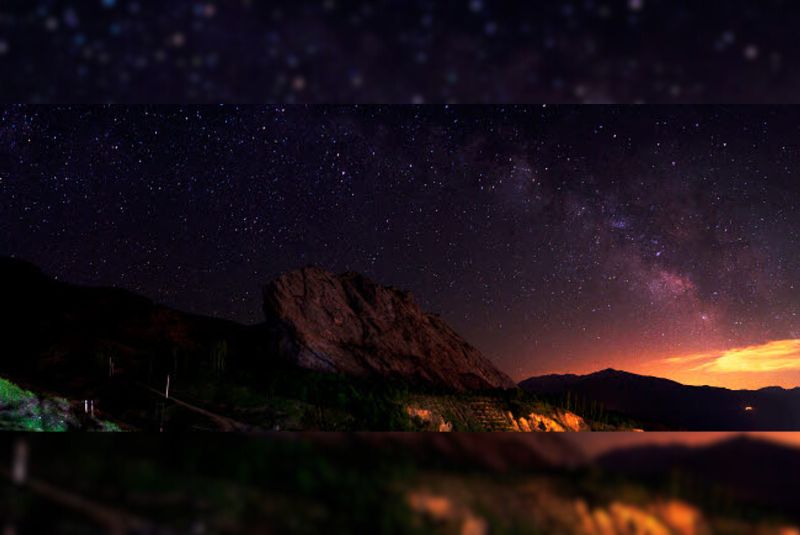
Nestled in Qazvin Province, Alamut Valley is a high-altitude and secluded destination ideal for stargazing. With little to no light pollution, the valley offers an exceptionally clear view of the night sky, making it a favorite among astronomy enthusiasts. The location’s elevation and remoteness allow for an unobstructed look at the stars, offering a perfect environment to observe planets, constellations, and meteor showers. The valley is not only a stargazing paradise but also a place with historical and scenic interest, adding another layer of depth to the Iran astronomy tourism experience.
Mesr Desert (Isfahan Province)

The Mesr Desert in Isfahan Province is celebrated for its clear skies and expansive, undisturbed horizon, making it one of the top destinations in Iran for astrotourism. This desert is particularly famous for its ability to reveal the beauty of planets, the Milky Way, and meteor showers. Astrotourists visiting Mesr Desert can expect vivid celestial displays and an atmospheric stillness that enhances the experience. Mesr’s geographical conditions are ideal for clear visibility throughout much of the year, providing excellent opportunities for amateur and seasoned astronomers alike.
Maranjab Desert (Kashan)
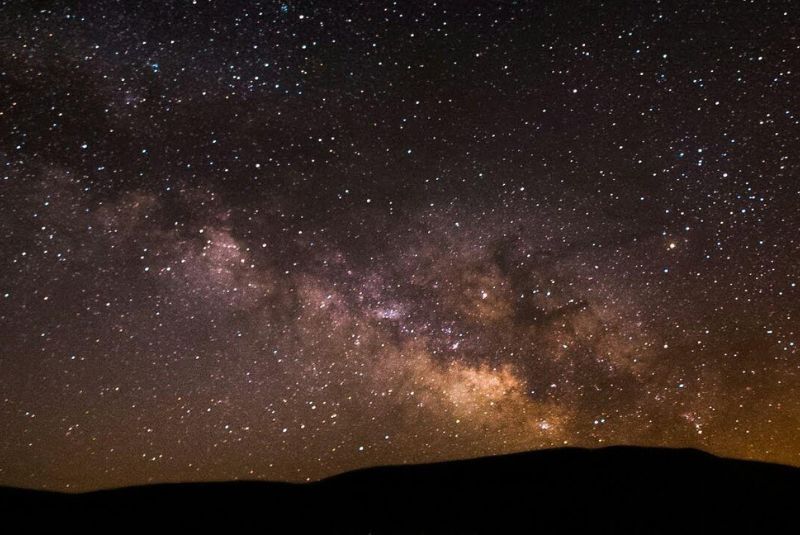
Situated near the city of Kashan, Maranjab Desert attracts visitors not only for its distinctive sand dunes and salt lakes but also for its incredible night skies. Known for its pristine conditions, this desert offers a striking backdrop for stargazing and photography. As a popular spot for organized astronomy tours, Maranjab often hosts guided sessions where visitors can learn about the constellations and track celestial events. It’s a location that combines natural beauty with accessibility, allowing for both structured and individual stargazing experiences.
Dasht-e Kavir (Central Desert)
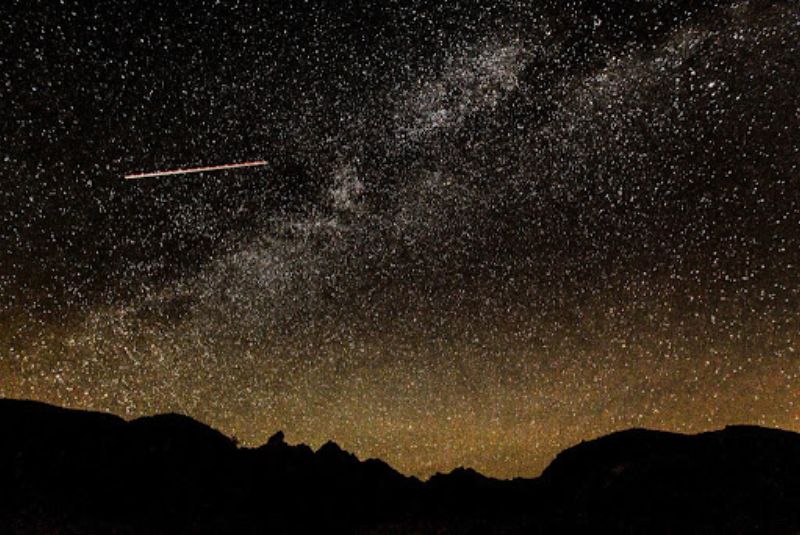
Dasht-e Kavir, Iran’s expansive central desert, is one of the country’s largest deserts and a remarkable destination for those seeking an immersive stargazing experience. The vastness of this desert, combined with a lack of artificial light, provides a breathtaking environment to view stars and constellations in a way that feels almost boundless. The desert’s dry climate and minimal cloud cover offer excellent conditions for clear skies, making it particularly suitable for observing meteors, nebulae, and the Milky Way in remarkable clarity.
Qeshm Island (Persian Gulf)
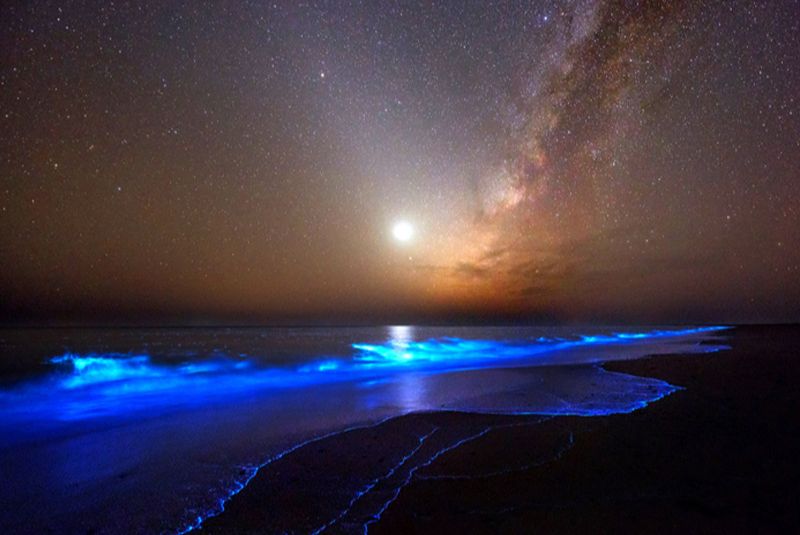
Qeshm Island, located in the Persian Gulf, is known for its natural diversity and offers excellent visibility for stargazing, especially during the cooler months. The island’s remote beaches and clear skies make it an attractive location for those interested in both marine landscapes and celestial observation. As one of Iran’s most geologically fascinating regions, Qeshm offers an ideal combination of night-sky visibility and scenic terrain, allowing visitors to witness constellations and planets from the tranquil shores of the Gulf.
Zanjan and Takht-e Soleiman

The city of Zanjan and the ancient site of Takht-e Soleiman, a UNESCO World Heritage location, offer an intriguing mix of historical and astronomical interest. Known for its historic ruins and past significance in Persian astronomy, Takht-e Soleiman is an atmospheric site for observing the stars as ancient astronomers might have done. This location allows travelers to experience the night sky with a view that hasn’t changed in centuries, offering a connection to both the past and the cosmos.
Special Astronomical Events and Festivals
Annual Meteor Showers
Iran’s deserts, particularly the Mesr and Maranjab Deserts, are prime locations for observing meteor showers, thanks to their clear skies and vast open spaces. Visitors to these regions can witness some of the most popular annual meteor showers, such as the Perseids in August and the Geminids in December. These events provide a spectacular show, with hundreds of meteors visible under ideal conditions. During these showers, astronomy clubs and tour operators often organize events in various desert locations, allowing visitors to fully appreciate the view under expert guidance.

Solar and Lunar Eclipses
Iran’s clear skies and varied terrain make it a great location for observing both solar and lunar eclipses. Deserts like Dasht-e Kavir and mountainous regions such as those in Alamut Valley offer excellent spots for eclipse viewing, where visibility is often unhindered by urban lights or weather. Solar and lunar eclipses are frequently anticipated by Iranian astronomy enthusiasts, with scheduled gatherings or special events that bring together both local residents and international tourists. Watching these events from Iran’s remote locations adds an unforgettable dimension to the experience, as the natural beauty of the landscape complements the celestial phenomenon.
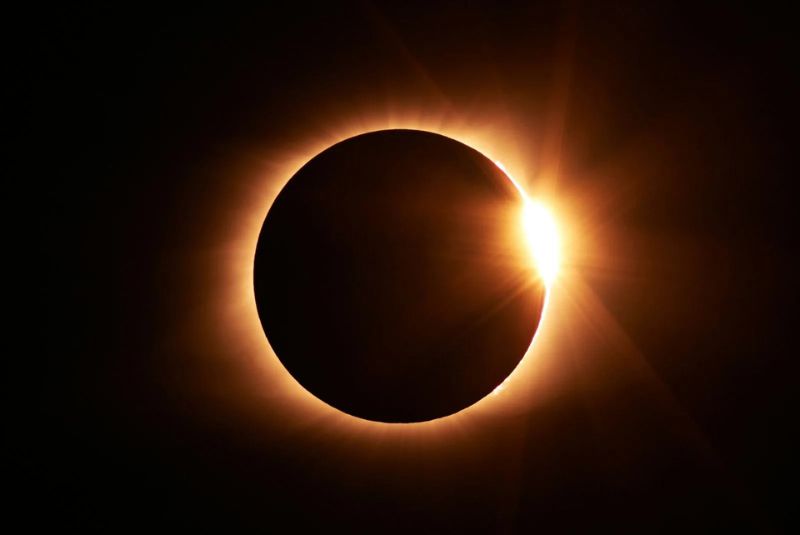
Astrotourism Festivals and Events
As interest in astrotourism grows, Iran has begun to host events that celebrate the night sky. Some local tourism agencies and astronomical societies organize stargazing festivals and workshops that include astronomy lectures, guided observation sessions, and astrophotography courses. These events often coincide with significant celestial occurrences, such as meteor showers or planetary alignments, offering visitors an enriched understanding of astronomy and Iran’s relationship with the cosmos. These gatherings are an excellent opportunity for enthusiasts of all levels to learn from experts, exchange experiences, and connect with others who share a passion for the night sky.
Observatories and Science Centers for Astronomy Enthusiasts
Tabriz Observatory and Planetarium
Located in the historic city of Tabriz, the Tabriz Observatory and Planetarium provides visitors with an engaging introduction to astronomy. Featuring an interactive planetarium dome, the center offers immersive star shows, which simulate the night sky and highlight seasonal constellations and celestial events. The observatory also houses telescopes for visitors to observe the moon, planets, and nearby stars, making it a popular destination for both local astronomy enthusiasts and tourists.
Shiraz Astronomy Park
Shiraz Astronomy Park is an educational space designed to inspire interest in astronomy and the sciences. With a variety of interactive exhibits and observational opportunities, the park offers guests an accessible way to explore astronomical concepts. The park includes scaled models of the solar system, hands-on displays, and occasional guided telescope nights. Visitors can also enjoy nighttime stargazing events, during which astronomers provide insights into the celestial objects visible in the night sky.
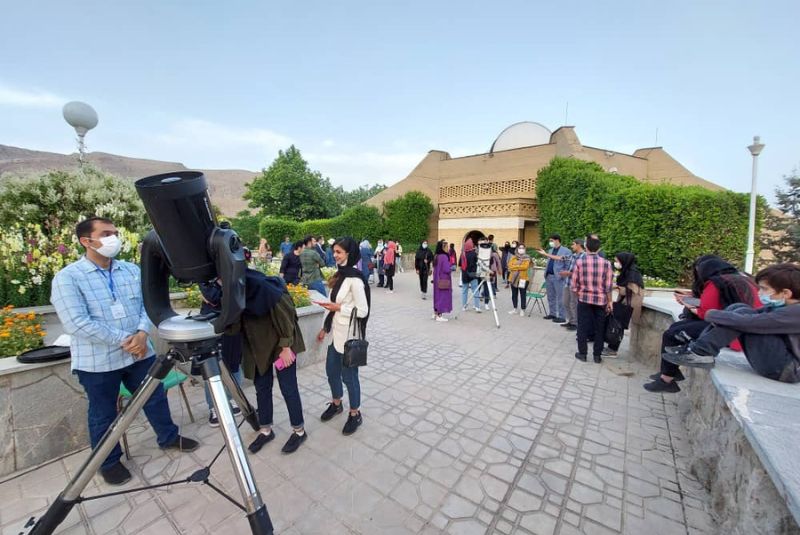
Khayyam Observatory (Neyshabur)
Located in Neyshabur, Khayyam Observatory is named after Omar Khayyam, the renowned Persian astronomer and poet who made significant contributions to mathematics and calendar science. The observatory provides educational resources, including lectures and guided viewing nights, making it an excellent stop for those interested in Persian contributions to astronomy. Visitors can view stars, planets, and constellations through telescopes while learning about Khayyam’s work and its impact on modern astronomy.
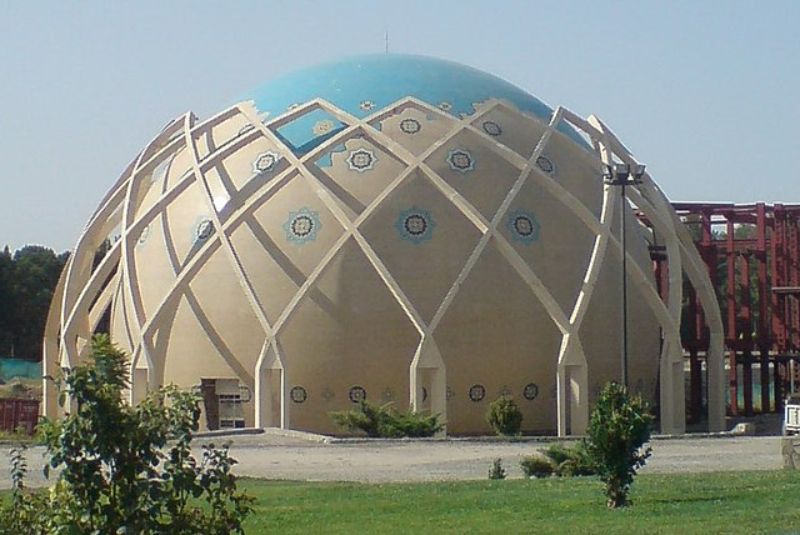
Institute for Advanced Studies in Basic Sciences (Zanjan)
The Institute for Advanced Studies in Basic Sciences (IASBS) in Zanjan is a prominent center for research in physics and astronomy in Iran. While primarily a research institution, the IASBS occasionally opens its facilities to the public, offering observation nights, lectures, and outreach programs. Visitors interested in advanced studies of space science will find this institution’s facilities, including high-powered telescopes and advanced astronomical research tools, to be a fascinating glimpse into Iran’s modern scientific community.
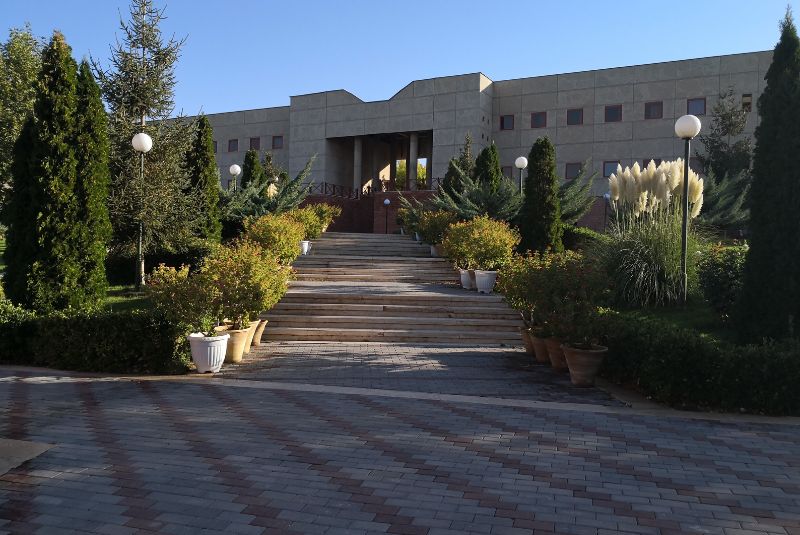
University Observatories
Several Iranian universities, including the University of Tehran and Ferdowsi University of Mashhad, operate observatories that occasionally welcome the public for special events. These institutions often hold community stargazing nights, where both students and visitors can view celestial bodies through university telescopes. By participating in these public observation events, visitors gain insight into Iran’s academic engagement with astronomy and have the chance to connect with local students and faculty who share a passion for the stars.
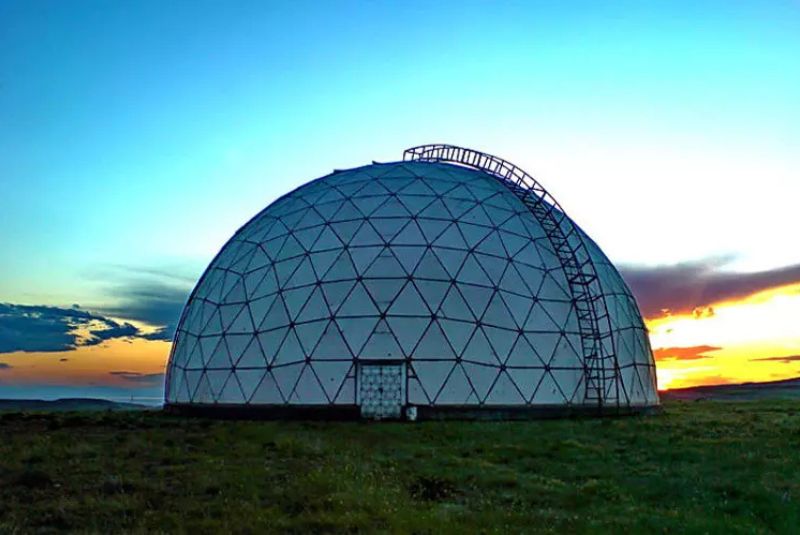
Best Times to Visit
The best times for stargazing in Iran are during the fall and winter months, when skies are typically clearer and atmospheric conditions are more stable. The colder months provide lower humidity levels and reduced cloud cover, especially in desert regions like the Mesr and Maranjab Deserts, making for optimal visibility. Seasonal celestial events, such as the Perseid meteor shower in August and the Geminids in December, are popular times for Iran astronomy tourism, as these natural spectacles offer unforgettable night-sky displays.
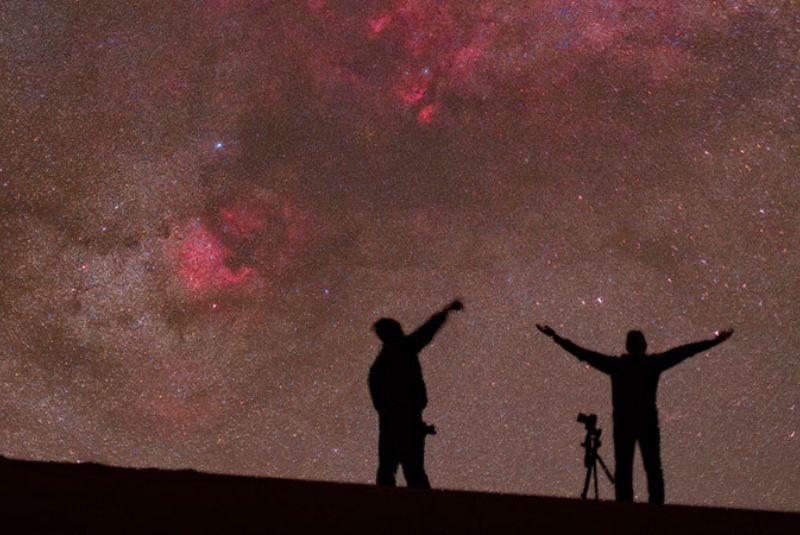
Packing Essentials for Stargazing
- Recommended Gear: Binoculars or portable telescopes enhance the stargazing experience, allowing visitors to view planets and star clusters in more detail. Red-light flashlights are also useful for nighttime navigation without disrupting night vision.
- Suitable Clothing: For desert stargazing, layered clothing is essential, as temperatures drop sharply after sunset. A warm jacket, gloves, and comfortable footwear are recommended for high-altitude and desert environments.
- Apps and Resources: Popular stargazing apps like SkySafari, Stellarium, and Star Walk help visitors locate constellations, planets, and upcoming celestial events. These resources add depth to the experience, guiding users through the night sky with ease.
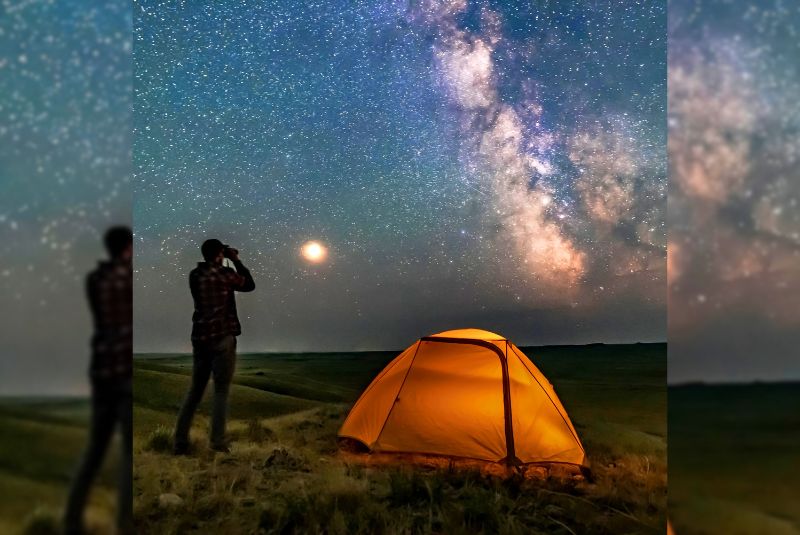
Travel Tips for Remote Locations
Traveling to remote locations for stargazing in Iran requires some preparation to ensure a safe and comfortable experience:
- Safety: Visitors should travel with a local guide who knows the area, especially when heading to desert or mountainous regions.
- Essentials: Carry enough water, snacks, and basic first-aid supplies, as many stargazing locations lack nearby facilities.
- Preparation for Nighttime Conditions: Plan for lower temperatures and limited visibility after dark. Bringing a map, power bank, and extra batteries for any devices is recommended, as cellphone service may be limited in remote areas.
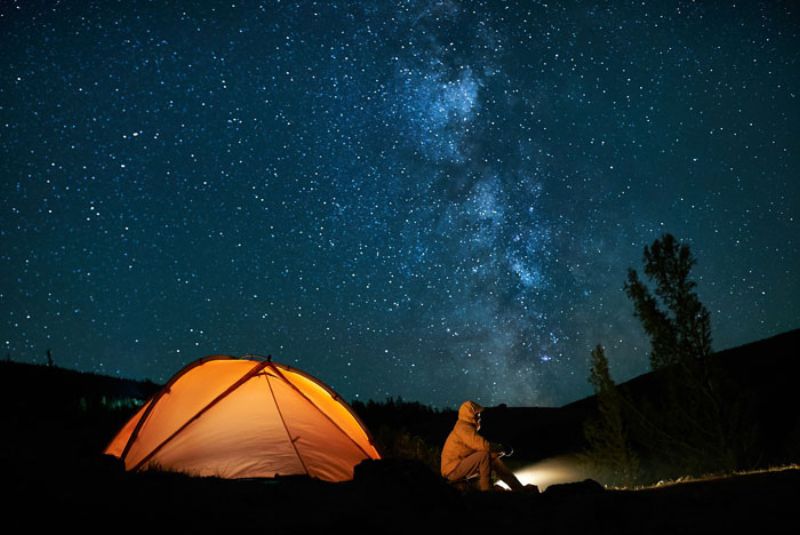
Photography and Astrophotography Tips
Stargazing beginners can capture beautiful shots of stars, the moon, and planets even with minimal equipment:
- Use a tripod to stabilize the camera for long-exposure shots.
- Manual focus set to infinity helps to sharpen images of distant celestial bodies.
- ISO and Exposure: Setting a high ISO (800–1600) and longer exposure (15–30 seconds) allows the camera to capture faint stars and celestial features.
For more experienced photographers looking to capture detailed night-sky images:
- Camera Settings: An ISO of 1600–3200, exposure times of 15–30 seconds, and a wide aperture (f/2.8 or lower) are recommended for deep-sky shots.
- Tripod and Remote Shutter Release: A sturdy tripod and remote shutter release are essential for clear, steady shots. Use of a tracking mount is ideal for photographing galaxies and nebulae, as it allows the camera to follow the Earth’s rotation.
- Post-Processing Software: Advanced photographers often use editing software like Lightroom or Photoshop to enhance the clarity and color of night-sky photos.
Best Places in Iran for Astrophotography
Iran’s diverse landscapes and low-light locations offer prime spots for astrophotography. The Mesr Desert and Dasht-e Kavir are ideal for wide-angle shots of the Milky Way, while Alamut Valley offers a high-altitude vantage point with minimal light pollution, perfect for capturing constellations and planets. Qeshm Island is popular for its unique foregrounds, where coastal elements add depth to night-sky photography.
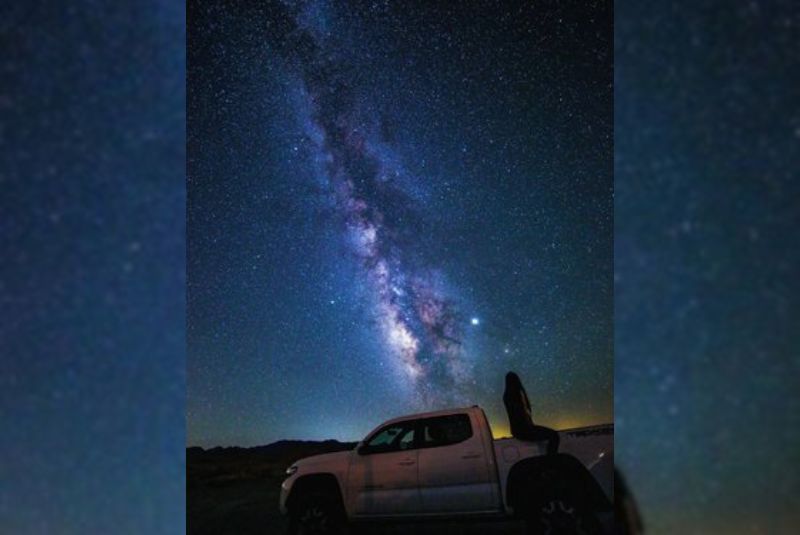
Local Etiquette and Light Pollution Awareness
When stargazing or photographing the night sky in Iran, it’s important to be mindful of light pollution. Use only red-light flashlights, as white lights can disrupt the visibility of stars and the night vision of other visitors. Additionally, avoid moving lights or using flash photography in group settings to respect the experience of others. Keeping movement minimal and maintaining quiet environments helps everyone fully enjoy the tranquility and beauty of the stargazing experience.
Final Takeaway
Iran astrotourism offers a truly unique chance to explore the wonders of the night sky in some of the world’s most beautiful and serene locations. From ancient observatories and desert landscapes to modern astronomy parks, Iran has something special for every stargazer.
With a little planning, visitors can experience the magic of meteor showers, constellations, and quiet nights under a sky filled with stars.
Share your story!
Comment below and let us know about your Experience.
Your story inspires others!


Comment
Leave a Comment